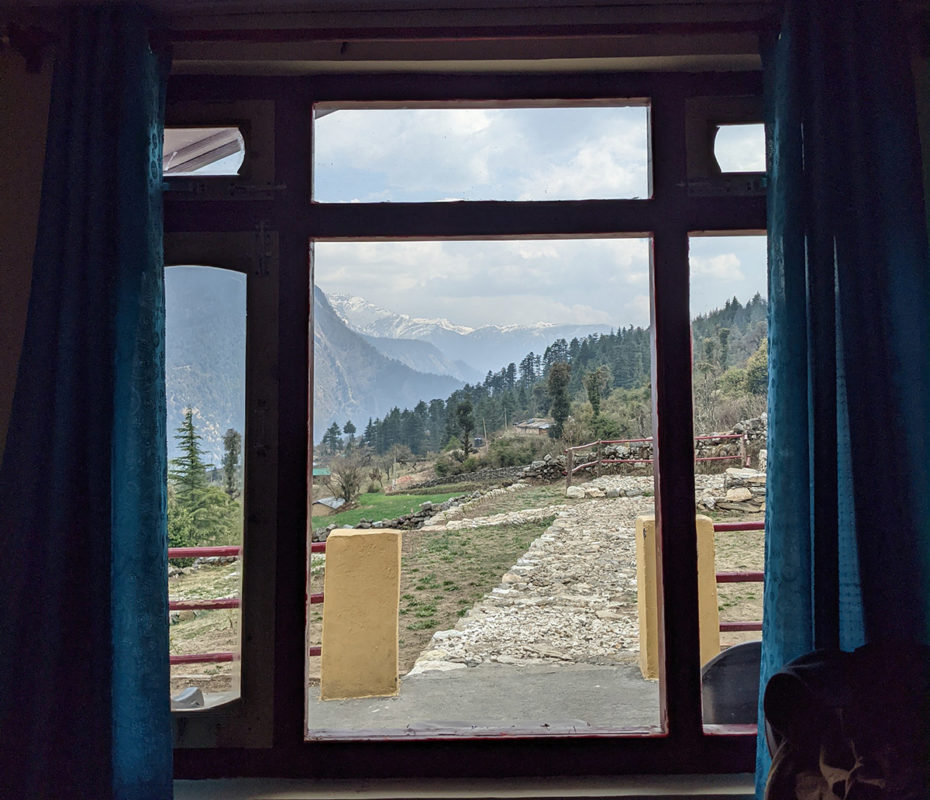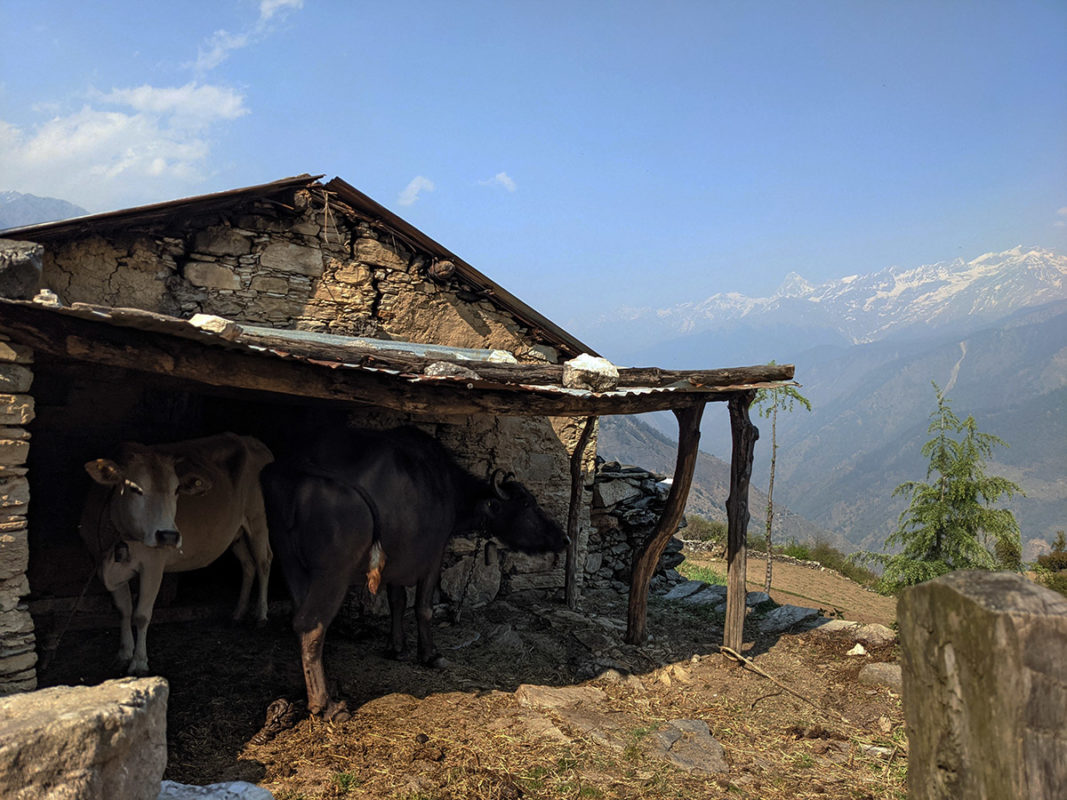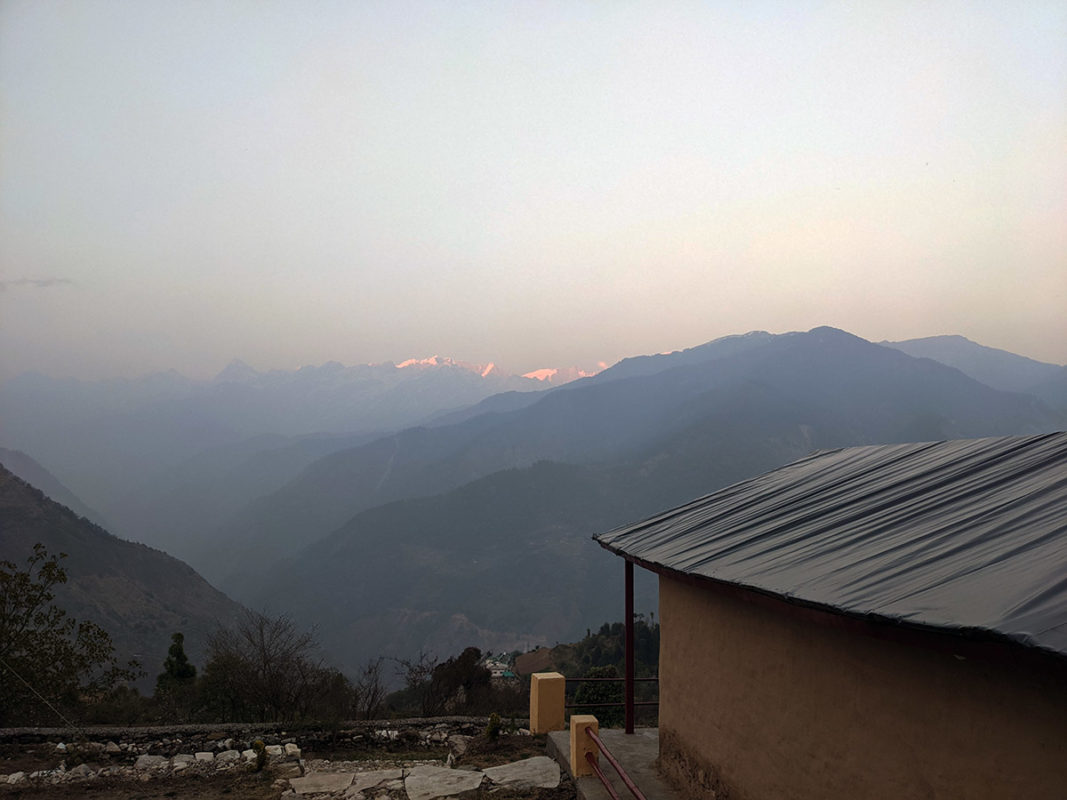NOTICE: This post references card features that have changed, expired, or are not currently available
“Off the beaten path” may be a nonliteral term most of the time, but I think it hints at a real strategy for getting somewhere which feels as pristine and authentic as it looks. This post about traveling to the remote Indian village of Raithal in the Greater Himalayas scratches that “off-the-beaten-path” itch with an experience low on the luxury scale, but high on the adventure and immersion scales as a result.
Getting to Raithal Village

Raithal Village is truly remote. The closest “town” is a windy 25 minutes down the mountain with a few more shops than Raithal, but hardly much more. The closest city with an internationally compatible ATM, bus stop, grocery store, and shopping mall is Uttrakashi an hour and a half away, and the closest airport in Dehradun is ~7-8 hours away.
It’s not necessarily hard to get to Raithal Village, but it does take time. For the easiest option you can simply hire a private cab from Dehradun airport, costing somewhere in the range of $75-$90.
Or for the budget option, here’s what we did:
- From Dehradun, go to Rishikesh first (a popular destination worth seeing anyway and a ~$12 cab ride from Dehradun airport).
- Then catch a bus or shared cab from Rishikesh to Uttrakashi costing ~$7 per person. (Having tried both the bus and the shared cab, I prefer the shared cab which was just as cheap, and somehow magically faster (and far less terrifying.))
- Then catch another cab from Uttrakashi up to Raithal Village (~$2 per person).
- Once in the village, streets become cobble walkways so you have to hike the last 15 minutes or so up to where the Airbnbs are.
Staying in Raithal Village

We spent most of our Raithal Village visit in this charming little Cob-style Airbnb aptly named “Raithal Retreat”. It immediately became my new favorite Airbnb – the kind of place you can build your whole trip around.
The property is practically the northernmost in the village so you feel like you’ve got the mountain to yourself with the National Forest behind you and the village below. Right outside your front door are the snow-peaked mountains of the Greater Himalayas, mingling with the clouds with surreal enormity. After 10 nights, the view still felt unbelievable and I found myself understanding how these great forces of nature rise to spiritual significance in the East.
“Retreat” is the perfect word for this place. You can feel the layers of modern pretension peeling off of you as you tune your routines to the village around you. Even with impressively stable connectivity from my Airtel SIM card for work, I felt a mental re-set, drinking chai three times a day and hand-washing my clothing like the locals. Days full of simple things.
Eating in Raithal Village

Raithal’s lack of tourism means there isn’t a real restaurant presence, but the self-sufficient, agricultural nature of the village also means that many folks are growing their own food, and there’s not much of a grocery store presence either. There are little corner-store style shops which have packaged snacks, bottled water, etc, but not much else.
Because of this, we mostly relied on our host Naveen for our meals and it also meant that our meals were almost entirely made from ingredients grown by Naveen’s family right down the hill. (As farm-to-table as it gets!) Even the wheat for the chapati is grown on his family’s land down the hill, then separated form the chaff at his neighbors house before it’s taken back to his front porch to be dried and ground up for flour. Everyone in the village eats what they grow themselves, buying and selling from one another to make up for whatever their own gardens lack.
Watching the village provide for itself this way is part of the magic of this place.
Hiking in Raithal Village: Dayara Bugyal

There are lots of unofficial hikes you can go on simply striking out in any direction along little pathways created by the sheep and their shepherds. However, if you hike up into the National Forest too far, you’re basically on the Dayara Bugyal path – the most popular trek in the area which technically requires a permit and guide for visitors. The local shepherds have permission to live essentially nomadic lives on this land, camping in various spots as their sheep and goats graze. As you hike you’ll see them and other locals going about their work, carrying massive sacks of sticks or leaves bigger than their own bodies on their heads and shoulders – putting you to shame for your tiny hiking backpack.
“Dayara Bugyal” translates to “high altitude meadow” and that’s exactly what you’ll find at the end of this scenic trek, but somehow more epic and otherworldly…like something you’d see in a Star Wars movie.
(Make sure to coordinate with your guide or host I’d say at least 2 days before you hike since they have to file a permit for you for the specific day you intend to hike – this should be around $10-$20 per person, depending on your guide’s rates, which can vary quite a bit.)
Raithal Village Summary and Photos
Raithal Village is one of those destinations travelers dream of where you can witness a way of life totally authentic to itself, too remote to be inundated by a deluge of international tourists and the Starbucks knock-offs we leave in our wake. The culture feels both vulnerable and invincible at the same time. Locals talk of a highway coming soon, and a brand new hotel which I can hardly resent as a tourist, though I occasionally allow that paradox. For the moment though, it’s a living postcard of Himalayan life and a unique view of India.
We stayed 20 nights in Raithal and I could have easily stayed longer.





















This is exactly the trip I want and I’m now starting to plan it. Two questions: first, when are the best times of year to go here? Second, to get from the US to Dehradun, would I need to get an award flight to DEL and then book separately a (cash or points) flight to Dehradun? Or will award bookings get me all the way to Dehradun?
Hi iam ajay rana and raithal is my village and
Its to wonderful blog about raithal and dayara bugyal.
The chai spot is called Gui Bugyal, and the tea we had was prepared with a wild root, and it imparted a wonderful flavor to the tea. The cowsheds are also serving the purpose of protection against rain hail and thunderstorms.
Great post. We see so much about the tried and true destinations, and there’s nothing wrong with those, but anyone should try to do something really different at least some of the time.
Raithal is so remote that I live in the Indian Himalayas and haven’t heard of it. Well done.
Haha nice! Would love to hear what gems you know of in your region too! (The Indian Himalayas are so special! I intend to come back.)
Hi Caroline! It’s a nice blog about Raithal. As you mentioned that you would like to know more of Indian Himalayas, I hope you must have read about Gartangali bridge in Hersil valley leading to Nelong Valley. I think you would like to explore Nelong valley in future travel to India and I would like to read more of your blogs. Thank you.
We actually did a day trip to Harsil and Gangotri. We tried to stop at Gartangali on our way as well, but it was still closed for winter! 🙁 (Just after we left, it opened back up for the season and it looks gorgeous!)
Neat write up!
Had once been on a similar remote rental, I think the place was Kausani.Nainital & Ranikhet are fantastic spots to explore, if you do visit Kausani.
And if you’d like a complete change of scenery of the Himalayas, Leh-Ladakh is postcard material!
Thanks for the recommendations! Leh-Ladakh area is definitely on my list for next time!
Great post. Please…more of these!
So, my questions are “How did you ever find this village?” IOW, where did you read about it or hear about it” Then : “Did you commit to your length of stay ahead of time? If so, why that length?”
So the questions are less about the specific place and more about your travel style…
We found out about it from Airbnb actually, and booked all 20 nights before arriving.
Basically we were hoping to sort of replicate a great experience we had in January where we found an awesome, private and homey Airbnb in a beautiful spot in Jamaica and booked 10 nights in a row. With that experience in mind, we looked at different mountain Airbnb’s in Northern India hoping to find one with that same, “I could stay here for weeks” quality, and sure enough, it worked!
(We actually booked 10 nights at first but after visiting Haridwar and Rishikesh felt like starting our mountain time early, so booked another 10 nights and headed straight there.)
Very cool. I have to say that you guys got lucky, as it was a gamble that the spot was good.
Always Amazed to hear how others travel—I would’ve been bored after a few days. Good for you, though!
Always nice to see a travel article! What’s the elevation at Raithal and on the Trek up to the meadow? Did you camp enroute?
Raithal’s elevation is 1800 meters (similar to Denver for instance) and Dayara is more like 3000 meters. We did the trek in one day, without camping which allowed for about 3.5 hours up, one hour exploring the meadow at the top, and 2.5 hours down. I think camping would be awesome though because the meadow is huge with lots to explore! Lots of people do it as a multi-day trek so they can explore more at the top.
Fantastic post to remind us of the simpler things in life.
I love this! Amidst all the wonderful posts about points and miles, it’s great to have an occasional write-up about a unique place.